There’s something so comforting about a plate brimming with fresh, colorful veggies tossed in a silky sauce and pasta. This Creamy Vegetable Pasta Primavera Recipe is all about that perfect balance of bright, tender-crisp vegetables with a luscious, dreamy cream sauce—an absolute joy to make and eat any day of the week.
Jump to:
Why You'll Love This Recipe
I get genuinely excited about this Creamy Vegetable Pasta Primavera Recipe because it blends vibrant vegetables with a comforting sauce that feels both indulgent and fresh. It’s a versatile dish, perfect for weeknight dinners or casual gatherings.
- Bright and fresh flavors: The mix of fresh veggies like asparagus, zucchini, and cherry tomatoes keeps every bite vibrant and full of texture.
- Creamy but not heavy: The sauce is rich without being overwhelming, thanks to the balance of cream, chicken broth, and lemon juice.
- Quick and straightforward: You can have this on the table in about 30 minutes, making it perfect for busy nights.
- Easy to personalize: With so many veggies involved, you can easily swap in what you have on hand, from seasonal produce to your favorite additions.

Ingredients & Why They Work
Every ingredient in this Creamy Vegetable Pasta Primavera Recipe plays its part. The veggies provide texture and freshness, the cream brings silky indulgence, and the herbs and cheese add layers of flavor. Here are the keys to picking and prepping your ingredients well.
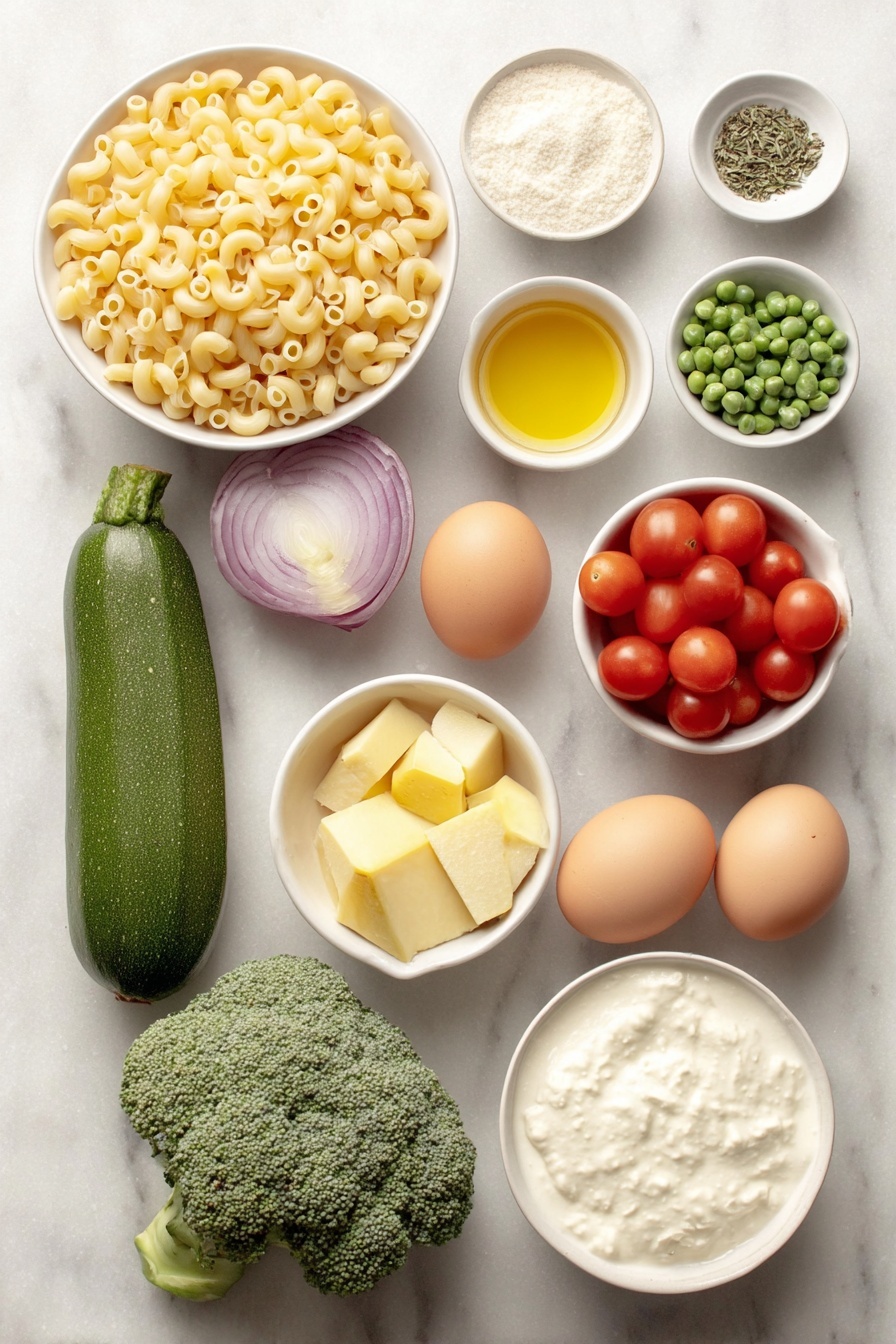
- Pasta: I use cavatappi for the curls that catch sauce, but penne or orecchiette work beautifully too.
- Extra virgin olive oil: Adds richness and carries the flavor of the sautéed vegetables gorgeously.
- Red onion: Gives a subtle sweetness and a gentle bite that balances the creamy sauce.
- Broccoli florets: Adds a satisfying crunch; cut them into uniform pieces for even cooking.
- Yellow squash and zucchini: Both are mild and tender; slicing them thin and quartering helps them soften just right.
- Asparagus: Trimmed and chopped into bite-sized pieces, asparagus brings a lovely earthiness.
- Red bell pepper: Its sweetness contrasts beautifully with the other veggies.
- Cherry tomatoes: Halved, they burst gently during cooking for a hint of acidity and juiciness.
- Garlic: Minced fresh garlic smells unbeatable and builds the base for the sauce.
- Red pepper flakes: Adds a subtle kick, but you can adjust to your spice preference.
- Heavy cream: The secret to the luscious sauce; evaporated milk can be a lighter substitute without sacrificing creaminess.
- Chicken broth: Balances the richness of the cream for a perfectly smooth sauce.
- Cornstarch: Helps thicken the sauce just right without clumping.
- Dried herbs (oregano, parsley, thyme): Classic Italian flavors that bring depth and an herbal aroma.
- Lemon juice: Brightens the entire dish and cuts through the richness.
- Parmesan cheese: Freshly grated is key—this melts into the sauce beautifully and adds a salty, nutty finish.
- Frozen petite peas: Thawed, they contribute a pop of sweetness and color at the end.
- Fresh basil: Chopped last for a fragrant herbaceous note that feels summery and fresh.
Make It Your Way
I love how flexible this Creamy Vegetable Pasta Primavera Recipe is. You can easily swap veggies or tweak the creaminess to match your mood or what’s fresh at the market. I encourage you to make it your own—it's all about what makes you happy on your plate!
- Variation: Once I added grilled chicken to this recipe for a heartier dinner, and the balance of veggies and protein really hit the spot without extra fuss.
- Vegetarian swap: Skip the chicken broth for vegetable stock to keep it fully vegetarian while still rich and flavorful.
- Seasonal twist: In fall, I like swapping in roasted butternut squash and sweet corn for a cozy change.
- Spice level adjustment: If you love spice, feel free to bump up the red pepper flakes or add a pinch of cayenne.
Step-by-Step: How I Make Creamy Vegetable Pasta Primavera Recipe
Step 1: Cook Pasta to Al Dente Perfection
Bring a large pot of salted water to a boil and cook your pasta according to package directions. I always taste my pasta 2-3 minutes before the suggested time because I want that perfect al dente “bite.” Remember to reserve ½ cup of that starchy pasta water before draining—it’s pure gold for adjusting your sauce later!
Step 2: Sauté Aromatics and Vegetables
Heat 3 tablespoons of olive oil in a large deep skillet or saucepan over medium-high heat. Toss in the chopped red onions and broccoli florets and cook for about 3 minutes—just until they start to soften but stay crisp. Then add the squash, zucchini, asparagus, red bell pepper, and cherry tomatoes, seasoning lightly with salt and pepper. Cook for 2 more minutes until veggies are tender-crisp. The key here is to avoid overcooking—timing is everything!
Step 3: Build the Creamy Sauce
Clear your skillet and heat the remaining tablespoon of olive oil over medium heat. Add the minced garlic and red pepper flakes, sautéing just 30 seconds until fragrant. Turn the heat to low and pour in the heavy cream. Whisk together chicken broth and cornstarch, then stir that mixture into the skillet along with oregano, parsley, thyme, and a pinch of salt. Let the sauce simmer gently for 3-5 minutes until it thickens.
Step 4: Finish the Sauce and Combine
Reduce the heat to low and stir in half the Parmesan cheese until melted, followed by the fresh lemon juice to brighten the flavors. Add the thawed peas and chopped fresh basil, warming them through for a minute. Then gently stir the sautéed vegetables back into the sauce, followed by the cooked pasta. If the sauce seems too thick, add reserved pasta water a splash at a time—it’s all about that perfect silky consistency. Season with salt and pepper to taste, and top with the remaining Parmesan. Delicious!
Top Tip
From countless times making this recipe, I’ve learned a few tricks that make all the difference between good and unforgettable pasta primavera. These tips make sure your veggies are vibrant, and your sauce is perfectly creamy without any hiccups.
- Don’t overcook your vegetables: Use a timer and keep the veggies tender-crisp so the pasta primavera has that fresh-just-picked vibe.
- Al dente pasta is key: It will hold up to the sauce and veggies without turning mushy, especially if you plan to have leftovers.
- Fresh Parmesan only: Pre-grated cheese can be dry and won’t melt as beautifully. I always grate mine right before cooking for that lush finish.
- Use pasta water wisely: It’s magic for thinning your sauce just enough while keeping it creamy and perfectly silky.
How to Serve Creamy Vegetable Pasta Primavera Recipe

Garnishes
I love finishing this dish with an extra sprinkle of freshly grated Parmesan for cheesiness, a few torn basil leaves for an herbaceous pop, and sometimes a twist of lemon zest to add brightness right before serving. It makes it look (and taste) that much more special!
Side Dishes
This pasta pairs beautifully with a simple green salad dressed with lemon vinaigrette or some crusty Italian bread to scoop up every last bit of creamy sauce. For something heartier, garlic-roasted mushrooms or grilled protein like chicken or shrimp round out the meal perfectly.
Creative Ways to Present
I once served this pasta primavera in individual ramekins topped with microgreens for a dinner party—it was a hit! You can also imagine plating it on a large rustic wooden board with colorful veggies artistically scattered around for a fresh “family style” presentation that’s both beautiful and welcoming.
Make Ahead and Storage
Storing Leftovers
Leftover Creamy Vegetable Pasta Primavera tastes just as good the next day, especially if you’ve made sure to cook the pasta al dente. Store it in an airtight container in the refrigerator for up to five days. I like using sturdy glass containers so the flavors stay fresh and it reheats evenly.
Freezing
Freezing pasta primavera is possible but a bit tricky because the cream sauce and fresh veggies can change texture. If you want to freeze it, store it without the cheese and add fresh Parmesan after reheating. I usually freeze just the sauce and veggies separately, then cook fresh pasta when ready to eat.
Reheating
I reheat leftovers gently on the stove over medium-low heat, stirring frequently and adding a splash of milk or reserved pasta water to loosen up the sauce. The microwave works too—just heat in short bursts and stir in between to keep it creamy and avoid drying out.
Frequently Asked Questions:
Absolutely! While I recommend cavatappi or penne because they hold onto the sauce nicely, fusilli, orecchiette, or even farfalle work wonderfully. Just be sure to cook to al dente so the pasta doesn’t get mushy.
Good question! You can use evaporated milk for a lighter option. It still gives you that silky texture without the extra richness. If you’re dairy-free, consider a creamy plant-based milk like cashew cream, though the flavor and thickness will vary.
Using a timer is your best friend here. Remember, you want the veggies tender-crisp—just cooked enough to be soft around the edges but still have a bite. Sauté them quickly on medium-high heat and keep an eye on the texture, testing by tasting.
You can! Swap the heavy cream for a plant-based cream alternative and replace the Parmesan with nutritional yeast or a vegan cheese. Use vegetable broth instead of chicken broth to keep it fully plant-based. The texture and flavor will be slightly different, but still delicious.
Final Thoughts
This Creamy Vegetable Pasta Primavera Recipe is one of those dishes I turn to when I want something that feels both special and simple. It’s a colorful, comforting hug on a plate that’s endlessly adaptable and always hits the right spot. Trust me—you’re going to love how easy it is to pull together and how beautifully it showcases the best of fresh vegetables in a creamy sauce. I hope you enjoy making it as much as I do, and don’t be surprised if it quickly becomes one of your weeknight favorites!
Print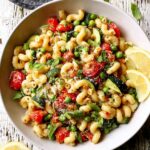
Creamy Vegetable Pasta Primavera Recipe
- Prep Time: 15 minutes
- Cook Time: 15 minutes
- Total Time: 30 minutes
- Yield: 6 servings
- Category: Main Course
- Method: Stovetop
- Cuisine: Italian
- Diet: Vegetarian
Description
A vibrant and flavorful Pasta Primavera featuring tender-crisp vegetables in a creamy Parmesan sauce, perfect for a fresh and comforting meal.
Ingredients
Pasta
- 12 oz. cavatappi or other short pasta such as penne, fusilli, or orecchiette
Vegetables
- ½ medium red onion chopped
- 2 cups broccoli florets cut into 1-inch pieces
- 1 medium yellow squash sliced and quartered
- 1 medium zucchini sliced and quartered
- 8 oz asparagus trimmed, cut into 1 ½-inch pieces
- 1 medium red bell pepper chopped
- 1 ½ cup cherry tomatoes halved
- 1 ½ cups frozen petite peas thawed
- ¼ cup fresh basil chopped
Other Ingredients
- 4 tablespoons extra virgin olive oil divided
- salt and pepper
- 4 cloves garlic minced
- ¼ teaspoon red pepper flakes
- 1 cup heavy cream (may substitute evaporated milk)
- 1 ½ cups chicken broth
- 1 tablespoon cornstarch
- 1 ½ teaspoon dried oregano
- 1 ½ teaspoon dried parsley
- ½ teaspoon dried thyme
- 2 tablespoons lemon juice
- ¾ cup freshly grated Parmesan cheese divided
Instructions
- Cook Pasta. Cook pasta in salted water according to package directions. Reserve ½ cup pasta water before draining the pasta.
- Sauté Vegetables. Heat 3 tablespoons olive oil in a large, deep saucepan or skillet over medium-high heat. Add chopped red onions and broccoli and sauté for 3 minutes.
- Add Remaining Vegetables. Add yellow squash, zucchini, asparagus, red bell peppers, and cherry tomatoes to the pan. Season with ¼ teaspoon salt and ¼ teaspoon pepper. Sauté for 2 minutes or until vegetables are tender-crisp. Transfer vegetables to a large bowl and set aside.
- Prepare Sauce Base. In the now empty skillet, heat 1 tablespoon olive oil over medium heat. Add minced garlic and red pepper flakes and sauté for 30 seconds. Reduce heat to low and add heavy cream.
- Add Broth and Seasonings. Whisk together chicken broth and cornstarch then add to the skillet along with dried oregano, dried parsley, dried thyme, and ¼ teaspoon salt. Bring the sauce to a simmer and cook until thickened, approximately 3-5 minutes.
- Incorporate Cheese and Flavorings. Reduce heat to low and stir in ½ cup freshly grated Parmesan cheese until melted. Add lemon juice, then stir in thawed peas and chopped fresh basil. Warm through gently.
- Combine Pasta and Vegetables. Stir the sautéed vegetables into the sauce, then add the cooked pasta. Add reserved pasta water a little at a time as needed to reach desired sauce consistency. Taste and adjust seasoning with salt and freshly cracked pepper.
- Serve. Garnish with remaining ¼ cup Parmesan cheese or more if desired and serve immediately.
Notes
- Do not overcook the vegetables; they should be tender-crisp for best texture.
- Cook pasta al dente by testing 2-3 minutes before package directions to maintain a firm bite.
- Use a large, deep saucepan or braiser for sufficient space to cook vegetables and pasta together; alternatively, use a Dutch oven or skillet plus large pot.
- Feel free to vary the vegetables used by selecting a good mix of textures, colors, and flavors.
- For convenience, a frozen stir-fry vegetable mix can be used but chop to ensure even cooking times.
- If adding protein, reduce the vegetable quantities or increase the sauce to maintain balance.
- Only use freshly grated Parmesan cheese for optimal flavor and melt quality.
- Adjust the amount of lemon juice to your taste for desired citrus brightness.
- Store leftovers in an airtight container in the refrigerator for up to five days.
- Reheat in the microwave with a splash of milk or water, or on the stovetop over medium-low heat, adding liquid as needed to thin sauce.
- For prep ahead, cook pasta al dente, cool and toss with oil, prep and store vegetables separately, mince garlic and chop basil, and grate Parmesan cheese.
Nutrition
- Serving Size: 1 serving
- Calories: 450 kcal
- Sugar: 6 g
- Sodium: 550 mg
- Fat: 22 g
- Saturated Fat: 8 g
- Unsaturated Fat: 12 g
- Trans Fat: 0 g
- Carbohydrates: 45 g
- Fiber: 5 g
- Protein: 15 g
- Cholesterol: 60 mg


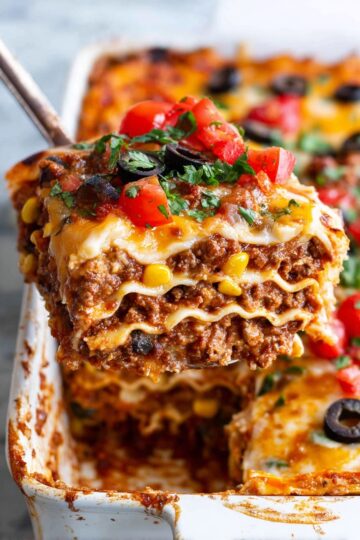

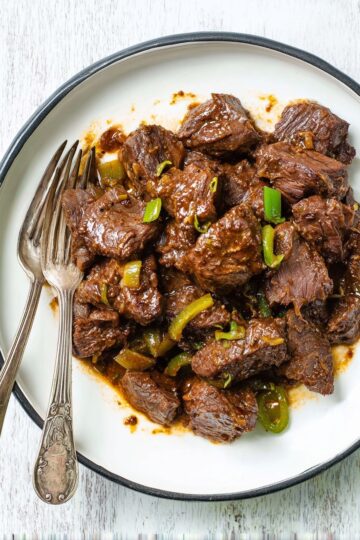
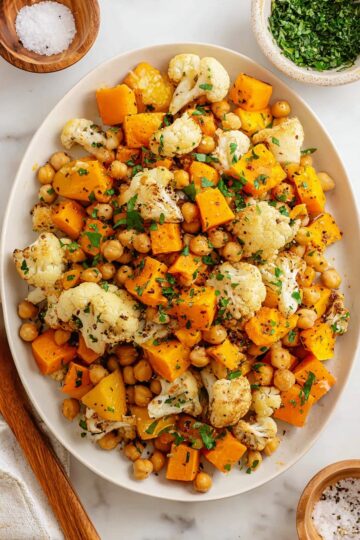

Leave a Reply